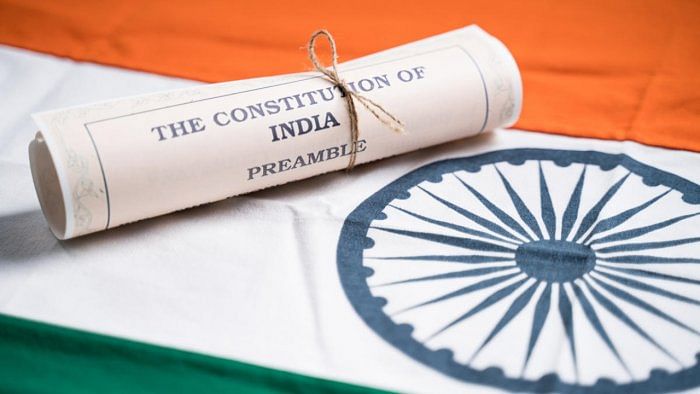
Representative image.
Credit: iStock Photo
The term India with Greek roots dating back to the fifth century BC has got "absolutely nothing" to do with the British, a section of prominent historians said on Saturday amid the ongoing political row over Bharat vs India, dismissing arguments suggesting the name India is a remnant of the colonial past.
They also clarified that both the names Bharat and India, mentioned in Article 1 of the Constitution as "India, that is Bharat...", are part of the country's history and both names are "completely legitimate".
"The British have got nothing to do with the name India... It is part of our history from the fifth Century BC. The Greeks used it, the Persians used it. India was identified as a country besides the Indus river. It came from there."
"Many historical sources, Megasthenes (Greek historian) and so many travellers referred to it. So, like Bharat, India is also part of our history," historian S Irfan Habib told PTI.
Prime Minister Narendra Modi was identified as the leader representing 'Bharat' at the G20 Summit on Saturday as he made his opening remarks at the beginning of the two-day meeting.
Earlier, a dinner invite had been sent to G20 delegates and other guests from 'President of Bharat', which ignited a political row with opposition parties claiming the government is trying to drop 'India' from the country's name.
According to Habib, linking the name India with British is a "blatant lie" and reminds him of the similar "false claim" made by the ruling dispensation when they renamed Rajpath to Kartavya Path last year.
He argued that 'Raj' in 'Rajpath' had nothing to do with British Raj, it referred to governance.
"They are lying the way they lied about Rajpath. It was Kingsway and Queensway which were renamed 'Rajpath' and 'Janpath', respectively, soon after Independence." the 70-year-old historian said.
Rajpath -- the ceremonial boulevard of the national capital that connects the Raisina Hill complex to India Gate -- was renamed 'Kartavya Path' in September last year and was inaugurated as part of the revamped Central Vista Avenue by Prime Minister Narendra Modi.
Historian Salil Mishra echoed Habib's sentiments.
Historically at least five names -- Bharat, India, Hindustan, Jambudweep and Aryavarta -- have been used to designate this land on geographical, ecological, tribal, community basis and more, he said.
"I would say this is only indicative of the long, varied and rich history that India has had. It is the history of encounters, history of contacts, communication, dialogues and these dialogues have produced many different names."
"Of course, globally India and Bharat are the terms widely used and both these terms have their own histories. There is no way in which we can privilege one over the other, and no way in which I, as a historian, can consider one superior and the other inferior," he explained.
Notably, the debate on "India, that is Bharat" is not new as it witnessed arguments from various members of the Constituent Assembly -- including HV Kamath, Hargovind Pant, Kamalapati Tripathi -- asking for it be rephrased during a discussion on September 18, 1949 as well.
Kamath suggested names like Hindustan, Hind and Bharatbhumi or Bharatvarsh; Congress member Hargovind Pant pitched for the names Bharat and Bharat Varsha, and not India.
"It would have been more proper to use the words 'Bharat, that is, India' in the resolution that has been presented to us," another Congress leader Kamlapati Tripathi had said during the Constituent Assembly debate.
But eventually when the then Constituent Assembly president Rajendra Prasad put the amendment moved by Kamath to vote, Article 1 remained "India, that is Bharat".